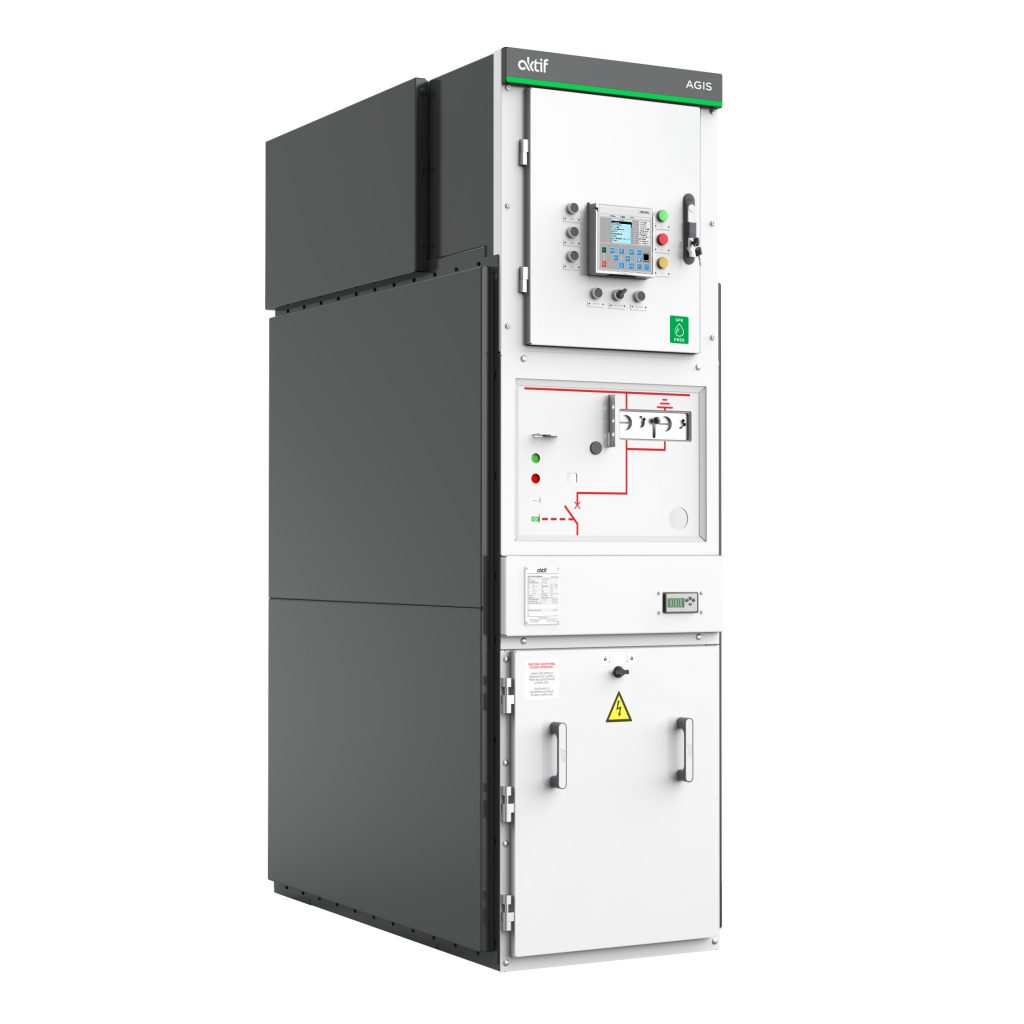
Medium-voltage Switchgear
In general, the voltage of 1,000V – 52,000V is called medium voltage. According to the latest standards (VDE), however, everything above 1,000V is high voltage. Electrical engineering still divides “high voltage” into the ranges “medium voltage” (3 kV to 30 kV), “high voltage” (60 kV to 110 kV) and “extra high voltage” (220 kV to 1150 kV). Since the energy loss decreases with increasing electrical voltage, high and extra high voltage is mainly used in the transmission of energy over long distances.
Medium-voltage grids are responsible for the regional energy supply of districts, cities or several localities. Small to medium-sized companies, hospitals, swimming pools or airports are often supplied by their own medium-voltage connections. The electricity generated in wind turbines or small hydropower plants fed into the power grid at the medium-voltage level.
The conversion from high to medium voltage, as well as from medium to low voltage is carried out in substations.
More Interested: New Revolution In Gas-Insulated Switchgear Technology
In addition to the power transformers, substations always consist of switchgear, constructed as an open-air switchgear or in encapsulated form as a gas-insulated switchgear and other equipment for measurement and control technology. The insulating gas used for the switchgear is in most cases a chemical combination of sulfur and fluorine. This gas is called SF6 (sulfur hexafluoride) and is about 23,000 times as harmful to our environment as CO2. Therefore, whenever possible, we should refrain from using SF6. The most important step in this direction is the use of alternatives in the conversion from high to medium voltage, but also the medium voltage switchgear can help to reduce the SF6 used and thus prevent the harmful emissions.
Instead of SF6 switchgear, either purely air-insulated switchgear or switchgear with an alternative gas can be used as insulation material. Air-insulated switchgear has the disadvantage that it has a larger “footprint”, i.e. is significantly larger than the gas-insulated switchgear.
More Interested: Aktif And Nuventura Announce Partnership To Manufacture And Develop Innovative SF6-Free Switchgear
Some market competitors use the so-called “NOVEC” gas instead of SF6, which is only superficially a good solution. NOVEC forms perfluoroacetic acid, which is a major cause of acid rain from organic compounds [Protonique Limited 2000]. Put simply, this means that while NOVEC is good for the ozone layer, it is still highly toxic.
A much more sensible solution is to use dry air as an insulating material. This “Dry Air” contains 80% nitrogen and 20% oxygen – and thus almost corresponds to the air we breathe. Companies such as Siemens or AKTIF Elektroteknik use this “Dry Air” to insulate their new switchgear. AKTIF with it’s AGIS even up to 36kV.

The goal must be to minimize the use of SF6 as quickly as possible. However, this does not only make sense when used as an insulating gas, but also when used as an extinguishing agent. Again, there are far fewer harmful materials.
Andreas Moeschl
Director Sales and Marketing
AKTIF GmbH


